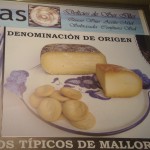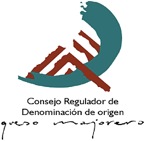Protected Designation of Origin Labeling
Posted: May 11, 2010
Categories: economic development / Food Processing / Food Strategies / Local Procurement
Protected Designation of Origin Labeling: An innovative tool for promoting and preserving Ontario’s Food and Agriculture Sector
Tammara Soma, Food Systems Planner  Sustain Ontario

There is a role for Protected Designation of Origin (PDO) labeling and Terroir to contribute to agricultural economic development and land preservation in Ontario. Countries such as France and Spain have used PDO labeling to classify and market their products. Tammara Soma, Sustain Ontario’s newest staff member has done extensive research on this topic, and shares the results in this blog.
The Concept of Terroir: Connecting Food and the Landscape
The Terroir concept originated in France and has become a transnational and commonly used concept for defining the “taste of place†most commonly associated with wine. However, at its fundamental level, Terroir “refers to the special characteristics that a particular geographical area imparts to the food products that are cultivated there.â€[i] By raising awareness of this concept, Ontario could gain an important economic development tool that would promote the local food economy and invest in an increasingly threatened agricultural sector. It is interesting to note that Histoire de la vie privée des français, explains Terroir as what “nature has seen fit to allow each of our provinces to produce.â€[ii] Beyond wine, the concept of Terroir has now been applied to the Protected Designation of Origin food labelling system.
Example of the Spanish Protected Designation of Origin Labelling
“Cooking is merely the landscape in the potâ€Â Josep Pla (Catalan Author, emphasis added)
In 1935, the French government through the Ministry of Agriculture established the Appelation D’Origine Controlée (AOC) to protect specific wines.[iii] The AOC system was successful economically and AOC status became extended to dairy and other agricultural products starting in the 1990s. In the 1970s, Spain developed its own appellation system and applied the classification to wine and food.[iv] Under the umbrella of the European Union, the Protected Designation of Origin seal is only given to agricultural products and foodstuffs, which are produced, processed and prepared in a given geographical area using recognized know-how.[v]
Inherent within the designation of the origin system is a tie to landscape and locality. The application required to obtain the protected designation of origin and registration is stringent, must meet rigorous standards and provide proof of origin based on registered land plots. The European Union provides a Database of Origin and Registration system (DOOR), documenting all of the approved designated food as well as the latest application that is currently in process.[vi]
An example of a product with a protected designation of origin seal is Queso Majorero (Majorero Cheese). The Majorero cheese is a fat cheese prepared from the milk of the Majorero goat breed with up to 15% Canarian sheep’s milk for ripening.[vii] It is produced on the island of Fuerteventura in the province of Las Palmas in the Canary Islands and in the municipalities of Antigua, Betancuria, La Oliva, Pájara, Puerto del Rosario and Tuineje.
There are a number of reasons for focusing on this example. Firstly, the designation of origin for the Majorero cheese implies the need to preserve the Majorero goat breed, which is significant in protecting the species and their habitat (the land). Secondly, the Majorero goats must live in a specific area with a varied topography and landscape as they only feed on stunted shrubs: monte verde, taray and laurisilva. This implies that the goats may not be intensively farmed and must live in what is called a “free-range†manner. Thirdly, by documenting the method of production, the traditional practice of producing this unique cheese is preserved and not lost. In a globalized realm where the loss of traditional language, practice and customs is common, the PDO process plays an important role in preserving this traditional food knowledge. Fourthly, the PDO process also preserves and puts on public record the historical significance on the Majorero cheese and the origin of the Majorero name (a name given to the ancient inhabitants of Fuerteventura known as Mahorata, Majorata or Maxorata because of the shoes they wear made of goatskin) and therefore preserving the Majorero identity.
To conclude, the Protected Designation of Origin labeling system is an innovative tool for promoting and preserving Ontario’s Food and Farm Sector.
The system could offer an alternative solution to the current problems faced in the agriculture sector and serve as an economic development tool to showcase Ontario’s finest products.
Imagine the economic, environmental, and cultural benefits this labelling system can potentially bring to Ontario’s unique foodscape:
- Increased support and investment for local food products and agriculture.
- Support for local food infrastructure (abattoirs, canneries, food terminals, food processing centers)
- Creation of new jobs in the food and agriculture sector.
- Increased economic viability of agriculture in Ontario.
- Farmland preservation and ecological protection.
- Habitat and seed preservation for unique foods and agriculture products.
- A new economic development and marketing tool for Ontario products.
- International recognition of Ontario’s quality food and beverages.
- Preservation of traditional method of food and beverage production and processing including sustainable/organic methods.
- Development of a food culture that highlights Ontario’s unique attributes and diversity.
For a longer more comprehensive report on the Protected Designation of Origin labelling system contact: Tammara Soma
[i] Davidson, Robert. Terroir in Catalonia. Journal of Catalan Studies, 2007: 40-55
[ii] Csergo, Julia. “The Regionalization of Cuisines,: in Food: A culinary history, ed. J.L.
Flandrin and M. Montanari (New York: Columbia University Press, 1999):502.
[iii] Trubek, Amy B. The Taste of Place. University of California Press: Berkeley, 2008.
[iv] Ibid
[v] <http://ec.europa.eu/agriculture/quality/database/index_en.htm>.
[vi] Ibid
[vii]European Union, Council Regulation EEC No 2081/92, Official Journal of the
European Communities, retrieved October 14th 2009 from <http://eur-lex.europa.eu/LexUriServ/LexUriServ.do?uri=OJ:C:1998:172:0006:0008:EN:PDF>(Official Journal of the European Communities 98/C 172/03).

